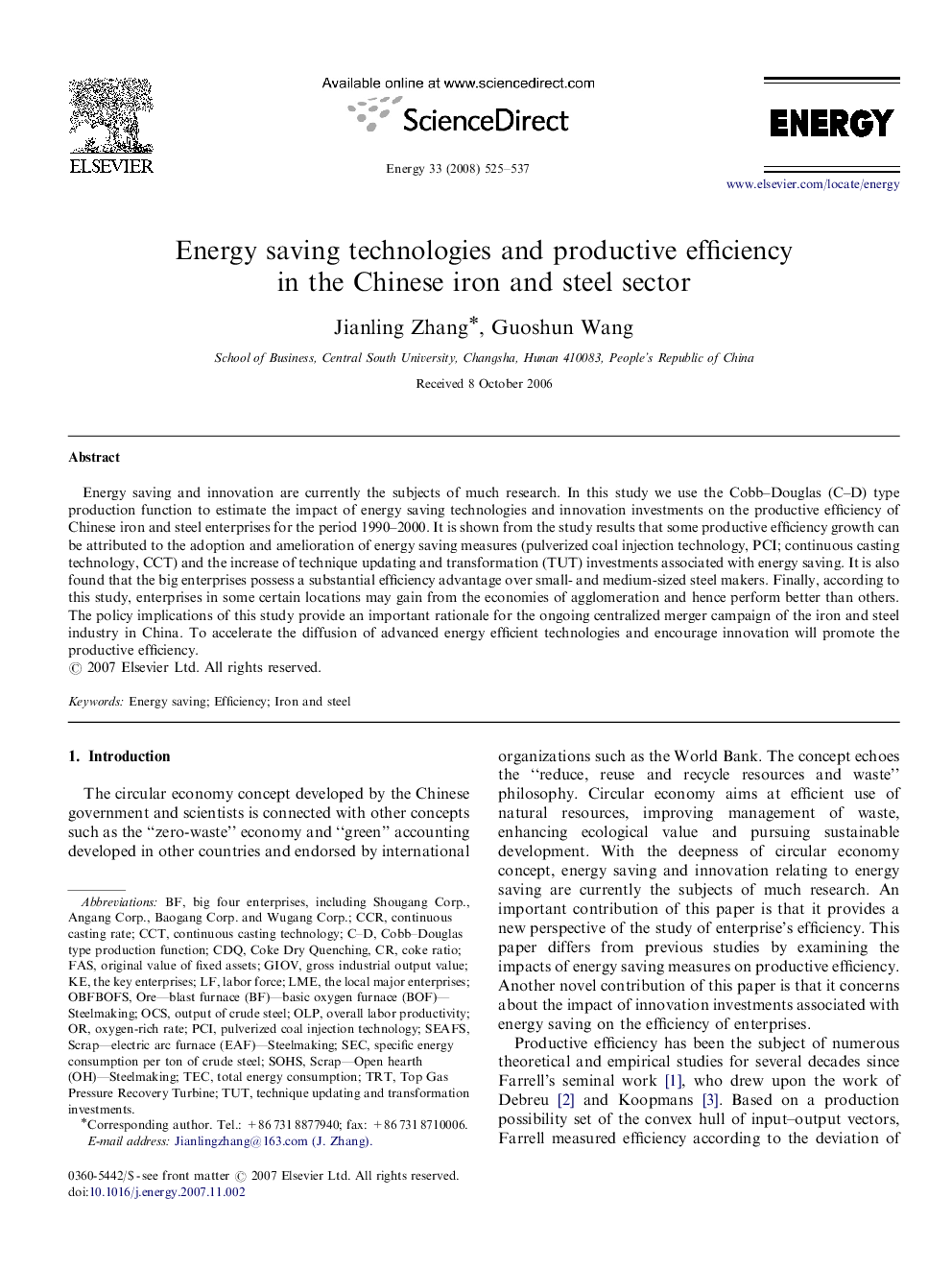| Article ID | Journal | Published Year | Pages | File Type |
|---|---|---|---|---|
| 1735708 | Energy | 2008 | 13 Pages |
Energy saving and innovation are currently the subjects of much research. In this study we use the Cobb–Douglas (C–D) type production function to estimate the impact of energy saving technologies and innovation investments on the productive efficiency of Chinese iron and steel enterprises for the period 1990–2000. It is shown from the study results that some productive efficiency growth can be attributed to the adoption and amelioration of energy saving measures (pulverized coal injection technology, PCI; continuous casting technology, CCT) and the increase of technique updating and transformation (TUT) investments associated with energy saving. It is also found that the big enterprises possess a substantial efficiency advantage over small- and medium-sized steel makers. Finally, according to this study, enterprises in some certain locations may gain from the economies of agglomeration and hence perform better than others. The policy implications of this study provide an important rationale for the ongoing centralized merger campaign of the iron and steel industry in China. To accelerate the diffusion of advanced energy efficient technologies and encourage innovation will promote the productive efficiency.
